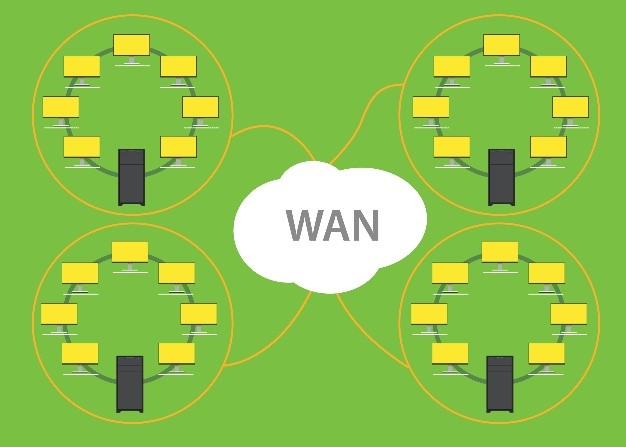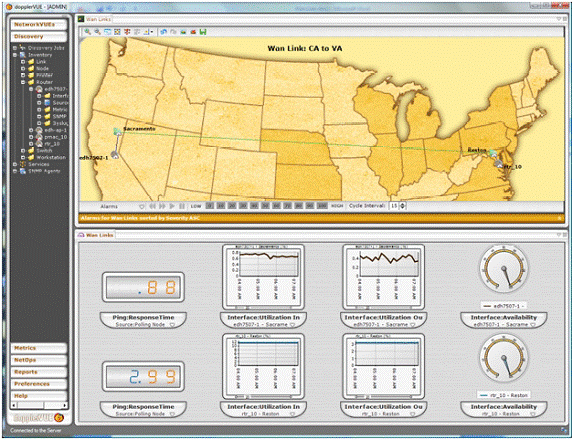
Often, business environments devote resources to LAN network monitoring to reduce congestion and recognize failing components, both of which are significant obstacles for productivity and performance. Yet, while IT managers focus on observing, diagnosing, and fixing the LAN, a business’s WAN could secretly victim to the same issues.
Large organizations rely heavily on their WAN, which means IT services must be proactive in preserving its integrity. WAN monitoring can save businesses significant amounts of money by identifying potential threats before they develop and securing vital information assets. Some specific benefits of WAN monitoring include:
Understanding WAN Capacity

10 Gigabit Ethernet & The Future of Networking
An organization’s performance suffers if its WAN capacity isn’t sufficient. For example, the network could suffer latency, packet loss, and retransmission, all of which affect the delivery of data and the effectiveness of digital services and employees.

What Is a Wide Area Network (WAN)?
Ideally, a network manager strategically plans a WAN with enough capacity before an organization begins to rely on it; then, throughout a WAN’s operation, managers should monitor and measure the WAN to ensure its capacity is sufficient. If an organization has already installed and begun using a WAN, it is still possible to understand and plan WAN capacity. This requires reviewing the work the WAN is expected to support, such as email, voice communications, and remote access, and gathering performance data from hardware like endpoints, routers, and switches. Finally, using network design tools, managers should produce a reliable bandwidth requirement. With this thorough research, network managers will inherently understand the details of their WAN capacity and be better equipped to identify trouble areas.
Troubleshooting More Effectively

7 free tools every network needs
A WAN is not a set-it-and-forget-it system. Network managers must continue to understand their WAN capacity through measurement of parameters like per-port metrics and end-user metrics and through forensic analysis of unwanted factors. With proactive monitoring methods like these, network managers can pinpoint problems as they develop and take swift corrective measures, limiting the impact of issues like latency and jitter and ensuring the WAN runs efficiently.

Techniques for Monitoring WAN Links
Organizations require fast problem resolution in any field, but a system as foundation as a WAN must be running at peak performance always — or at least as often as possible. The faster managers can troubleshoot the WAN, the less downtime organizations experience, and bigger and broader organizations can become.
Planning Growth More Accurately
As organizations grow, their WANs must grow alongside them. Just as a business leader would not expand into new markets without sufficient research, network managers should avoid changing a WAN without understanding its existing capacity.

Throughout the growth stage, managers should develop a timeline of events that will impact the WAN, such as adding a new location, adding additional end points, and adding network activities. Then, using information gathered from constant monitoring, managers can make informed decisions regarding network expansion. Lacking this data, network managers are essentially working in the dark, and there is no guarantee that the augmented network will function at sufficient capacity. It is much safer to research and move slow than court disaster with spontaneous growth.
Improving Disaster Recovery Plans

Even with WAN monitoring, oversight exists. Whether IT teams fail to notice key indicators of looming dangers or an unexpected shift rapidly alters a WAN’s performance, disaster can occur. By constantly monitoring WANs, organizations can be better prepared for disasters and develop appropriate responses well in advance.

Become A Digital Nomad, See the World
An organization should have several disaster recovery plans (DRP) in place. Because an organization cannot afford to be nonoperational for long, a DRP will ensure a WAN (and other invaluable systems) are restored after the briefest possible downtime. To assist in the fulfillment of the DRP, an organization should install failover hardware — and monitor that alongside the WAN. It is possible for a DRP to look perfect but collapse in reality, so network managers should consider testing their DRP when the WAN doesn’t need to function at full capacity, like nights and weekends.
Enhancing Services

Wireless Home Network – A Complete guide to protect it
Like everything else in the tech industry, WAN capabilities are improving every year. Just because a WAN is functioning well doesn’t mean it can’t be functioning better. Network managers should be aware of cutting-edge tech that can improve their WAN. Comprehensive WAN monitoring will reveal opportunities to improve services, ensuring organizations maintain peak performance in their WANs.




